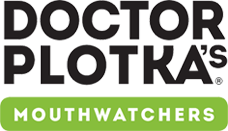
In approaching the world of dental hygiene, one is often confronted with three major concerns. Cavities, gum disease, and bad breath - all of which are caused by the acid produced by bacteria buildup on your teeth and gums. Once this buildup hardens into the hard to reach places of your teeth and gum, it is considered plaque and is very hard to get rid of without a trip to the dental chair!
Not all surfaces of the mouth are created equal, some are harder like teeth, others soft like gums, even the spongy surface we call tongue. All of these surfaces are porous, meaning they are permeable to fluid absorption and other material sitting on their surfaces.
Our oral care habits are meant to remove this layer of organic matter from the porous surfaces of our mouths. However, sometimes brushing and flossing may not be the best way to clean between teeth and other nooks and crannies which can lead to bacterial buildup.
Let’s explore some alternatives for the best way to clean these hard to get to surfaces.

Interdental Brush
To prevent this from happening one idea is to use an interdental brush as part of a daily cleaning routine. Interdental flossing provides several benefits as compared to traditional flossing. Utilizing an interdental brush to clean the furcation’s between our teeth allows for a fanning of the bristles into these concave cavities and thus, a significantly more thorough clean than rigid string floss. Another chief benefit to interdental brushing is a reshaping of the gum contour between teeth, resulting in a reduction of bacteria harboring periodontal pockets. Having some plaque on our teeth and gums is perfectly normal, but with negligence to cleaning the space between our teeth, we jeopardize our whole mouth health. Coming in various sizes, interdental brushes are an excellent choice for maintaining a safe and effective oral care routine.

Oil Pulling
Another alternative for creating a cleaner smile is oil pulling. By penetrating the porous surfaces of our mouth, oil pulling can reduce bacterial inflammation. In order to oil pull, swish a tablespoon of oil in your mouth for 15–20 minutes. The way oil pulling works is simple — when you swish the oil around your mouth, the bacteria get swept away and dissolve into the liquid oil. Coconut Oil is a popular choice for oil pulling due to its pleasant taste.
WANT A CLEANER SMILE? TRY THIS!

Tongue Scraping
Tongue scraping is another fast way to remove extra particles from the surface of our mouth. This practice is done with a small, slightly rounded tool made from plastic or metal, being pressed over the tongue back to front. Although no amount of scraping can replace a good toothbrushing, this extra step in oral care can significantly aid in overall biofilm reduction- and quickly alleviate bad breath! The benefits of this practice are quite enticing to add this extra step to a morning and evening oral care routine.

Flossing Bristles Brush
Two in one! A flossing bristle brush is a GREAT addition to your oral care routine and will assist you in your flossing efforts every time you brush. These bristles are 10x thinner than a typical brush and reach deep into grooves where 95% of cavities form (and other brushes can't reach) and under the gumline - making it very hard for plaque to form. The silver embedded into Doctor Plotka's Antimicrobial Toothbrush eliminates 99% of bacteria, viruses, and fungi living on your brush within 6 hours after use - this means you won't be re-introducing bacteria, or other microbes, back into your mouth each time you use it. Plus, you will avoid cross contamination with your neighbors brush!
Now that we’ve provided a few alternatives to traditional flossing, which method do you think you’ll try first?
